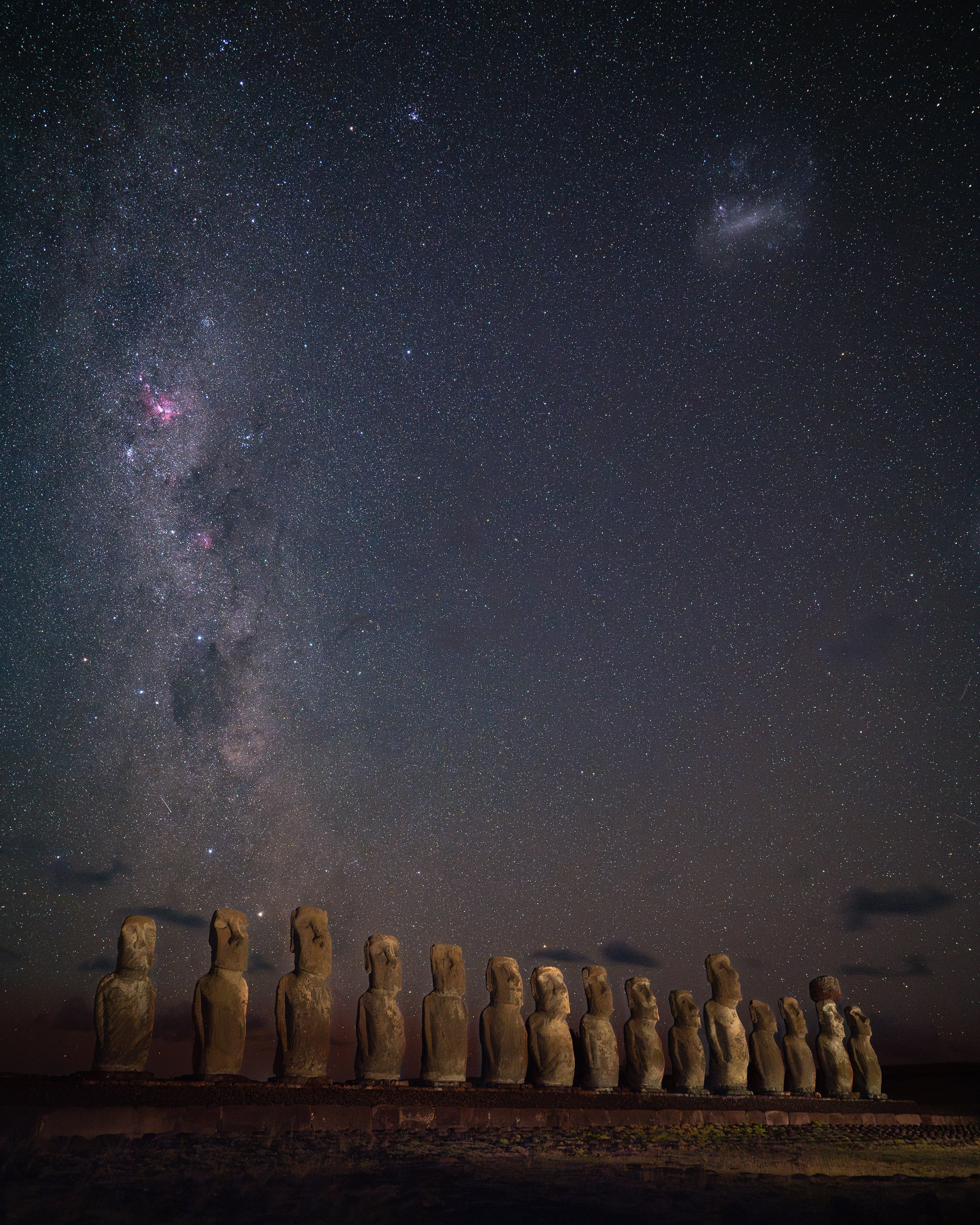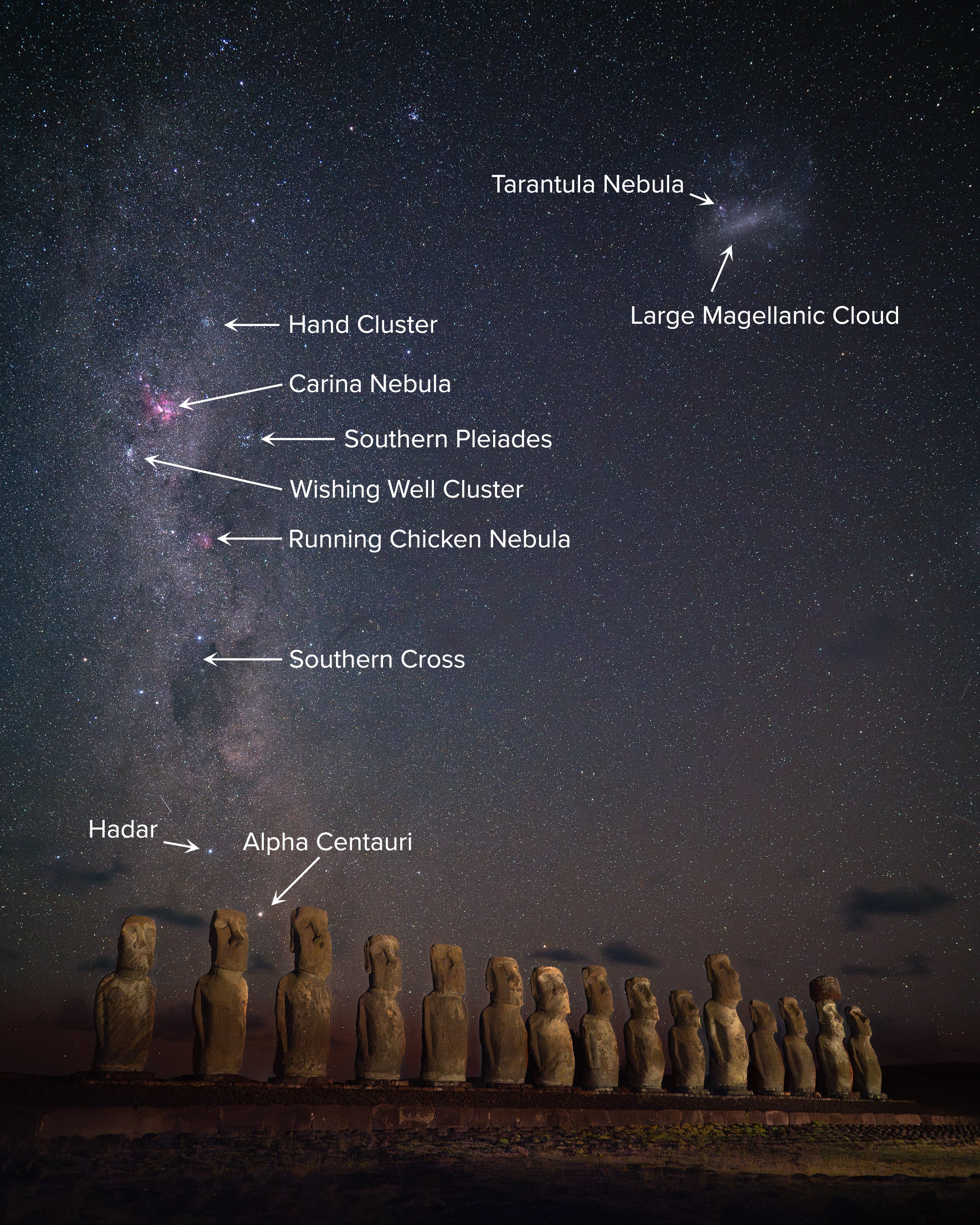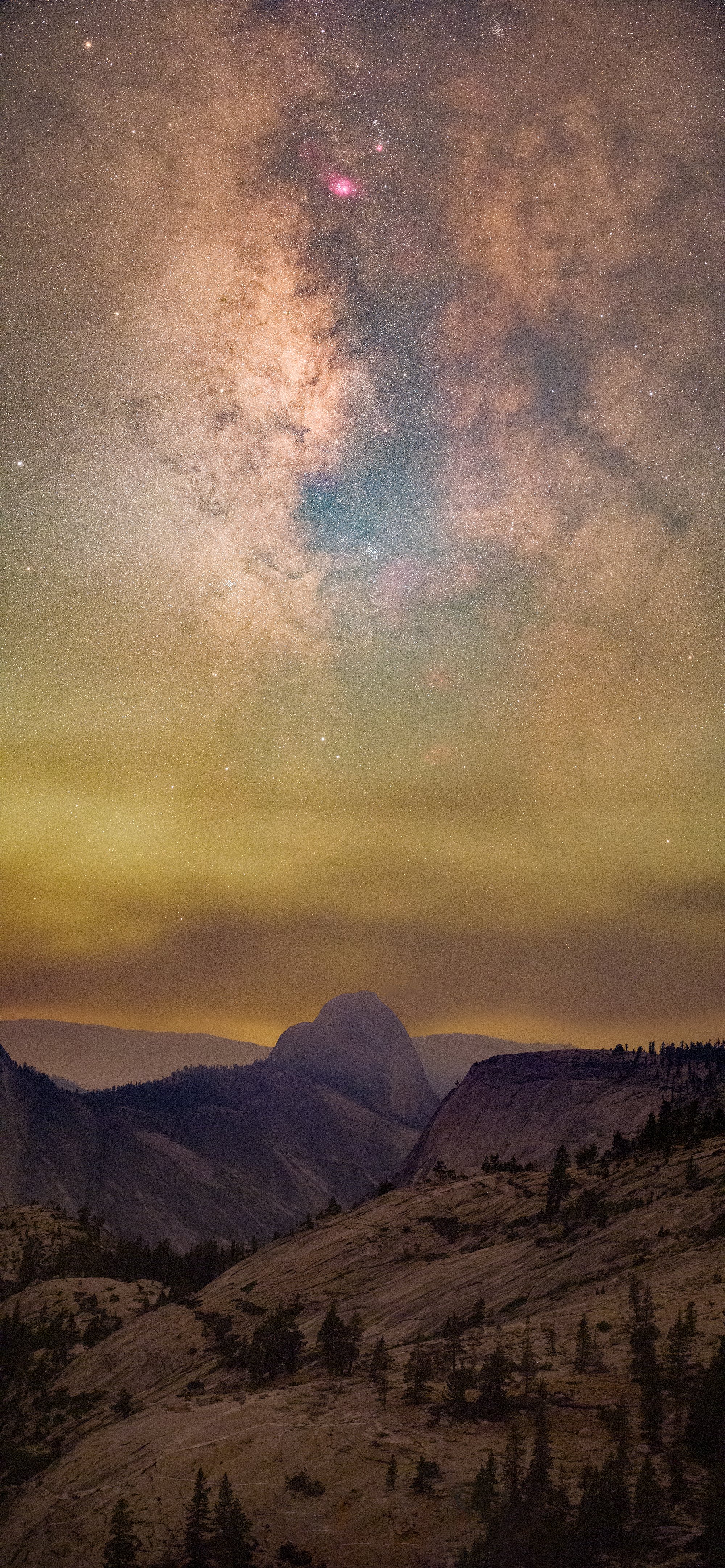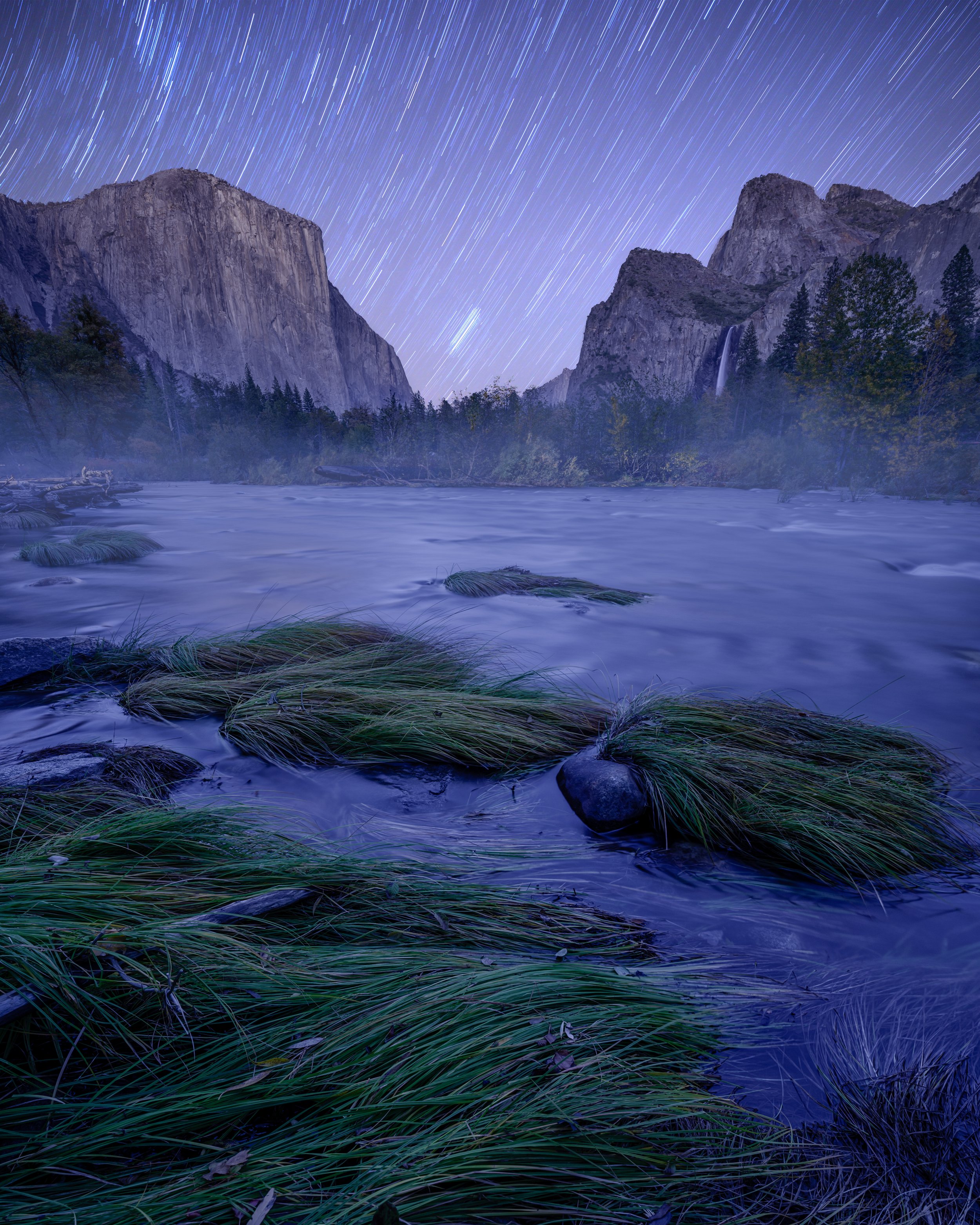Was 2024 the best year ever for night photography? It sure seemed like it!
In April millions of people prepared and traveled for the Great American Eclipse, which did not disappoint. Over the course of 2024 the sun released more than 50 X-class solar flares, resulting in solar-maximum aurora displays worldwide, some of which dipped well below the Mason-Dixon Line. And Comet C/2023 A3 (Tsuchinshan-ATLAS) delighted many of us in early autumn.
The year 2025 will also be big for us, not only with more stellar celestial events, but also because it marks our 10th year of sharing and celebrating and educating about night photography and all the adventures that go with it. We’re looking forward to a full schedule of both new and favorite destinations to keep us all seizing the night.
Until then, we reflect on 2024. We were fortunate to lead 21 workshops and tours, for which we visited nine national parks, seven islands and five international destinations. Now, in these last few days of this year, we honor the tradition of sharing our ten favorite night images with you. Will comets, eclipses and auroras be included in our top 10? Will they make yours?
Chris Nicholson
Yellowstone National Park. Nikon D5 with a Nikon 14-24mm f/2.8 lens. 15 seconds, f/2.8, ISO 12,800.
In September I photographed in Yellowstone National Park’s Norris Geyser Basin at night for the third time ever. The first time was way back, at a point in my career when I wasn’t yet good enough at night photography to create an image I’d care to show anyone. The second time, clouds rolled in and obscured every star in the sky. This third time, however, was … wow!
The atmosphere was dry and the sky was clear, revealing countless stars twinkling overhead. The air was a perfect temperature—cool enough so that the steam from fumaroles and hot springs was apparent yet not overwhelming. The lack of any breeze kept the steam from blowing away and prevented ripples from disrupting the perfect star reflections in the water.
Beautiful random patterns of runoff offered plenty of possible compositions, but I waited most of the night for the Milky Way to drift over this spot, aligned with this little pond and little stream. I loved how all the elements of this inspiring landscape came together into exactly how I wanted to remember the moment.
Martha’s Vineyard. Nikon D5 with a Laowa 20mm f/4 shift lens. 15 seconds, f/11, ISO 6400.
In spring we brought a workshop group out to Martha’s Vineyard to photograph lighthouses. On the first night we visited Gay Head Lighthouse, and fogged rolled in. Not a problem! Lighthouses were built for weather, so weathery nights can be a great time to photograph them.
After the group left for the hotel, Gabe and I stayed out to shoot more. Gabe in particular had an idea he was chasing, and he needed some time to execute it. That left me wandering around looking for images to create. While lighthouses are fun to photograph, after working a few angles, finding more compositions can become challenging. In those moments I search for anything in the area that I can juxtapose with the tower—a rocky shoreline, the keeper’s quarters, an oil house, etc. Here, I found these wonderful branches.
The way the bare branches crept into the scene, combined with the fog and the moody light bouncing around in it, made for a palpably eerie aesthetic. After one look at the LCD, I knew this would be one of my favorite lighthouse photographs.
Gabriel Biderman
Chicago, Chicago. Nikon Z 8 with a Nikon Z 24-70mm f/2.8 lens. 2.5 seconds, f/18, ISO 64.
There were plenty of images that I worked really hard to create this year. I used specialized gear, plotted exposures, and figured out where the sun and moon would be, but it was this accident of a shot that skyrocketed to the top.
Our Gateway Arch & Northern Route 66 workshop was probably the most underrated trip we offered this year. It was full of architecture tours, boat rides, skyscrapers, arches and plenty of Roadside Americana.
We always try to creatively capture the iconic symbols of the city or park we visit, and this Chicago Theater sign is definitely one. First I set up in the median strip of the street and composed several images capturing car trails. Then I accidentally triggered a 2.5-second exposure while I picked up the camera and tripod to adjust the composition. My finger went to the delete button but the image that appeared on the rear LCD gave me pause. Wow. That was a happy accident indeed.
I went on to try eight more intentional camera movement (ICM) shots but it was the “unintentional camera movement” that proved to be the most unique interpretation of the Chicago Theater for me that night.
Three Hours Outside the Ohio State Reformatory. Nikon Z f with a Nikon 19mm f/4 tilt-shift lens. Foreground: Four blended frames shot at 30, 15, 8 and 4 seconds, f/5.6, ISO 400. Background: 348 stacked exposures shot at 30 seconds, f/5.6, ISO 400.
Looks like it was urban night photography for the win for me in 2024! Our Rust & Ruinism tour was a dream come true, as we got night access to the Ohio State Reformatory (ORS), the Trans-Allegheny Lunatic Asylum and Carrie Furnaces. ORS is the famous Shawshank Redemption prison, and while most of us spent the night ghost hunting and lighting the peeling-paint-walled cells, a few of us adventured outside to create a star-trail establishing shot of the front of this 138-year-old edifice.
This was a tricky shot, but my trusty Nikon 19mm tilt-shift lens was huge in helping me keep all the lines straight. I first exposed the highlights in a controlled manner so that nothing would be blown out. Then I figured out the proper sky exposure and let it rip for 3 hours while I went back inside the prison. I was absolutely thrilled with the blend and stack, and then I finished it with a black and white conversion in Nik Silver Efex.
Lance Keimig
Near the Wreck of the Steel Ship Gardar BA 64, Paterksfjordur, Iceland. Nikon D780 with a Tamron VR 15-30mm f/2.8G lens at 20mm. 13 seconds, f/4, ISO 6400.
Despite 2024 being an amazing year for viewing and photographing auroras, it was a frustrating one for me. During the massive G5 storm in May, I was leading a tour in the Faroe Islands, a place that could have been an incredible location to experience the northern lights. Unfortunately the sky was completely cloudy during the entirety of the auroral activity. Then, during the coronal mass ejection of October 10-11, I was home in Northern Vermont, which had 100 percent cloud cover. Again, nothing, nada, not one trace of green or pink. Just gray.
However, I finally received my just desserts with a couple of “full spectrum” aurora experiences in Iceland in September.
One night our group was photographing the wreck of an old steel ship, which has long been grounded at the end of a fjord outside the town of Paterksfjordur, when a pretty decent aurora developed. With a good-sized crowd working three sides of the ship, it was becoming difficult to make an image without other photographers in the shot. If you know Matt, you know that wouldn’t bother him, but I decided to wander off.
I walked about 100 yards away from the boat where I found a little spit of land that made for a great foreground, with the town in the background. It made for a strong composition with a great mix of green, blotchy clouds, and a vibrant splash of magenta thrown in for good measure.
Lawrence the Sheep, Djupavik. Nikon D780 with a Tamron VR 15-30mm f/2.8G lens at 15mm. 30 seconds, f/3.5, ISO 3200.
I don’t think this is one of the best images I made this year, but it certainly is one of my favorites, and for a very funny reason.
During the same Westfjords trip we were all busily photographing auroras outside the old herring factory at Djupavik. I was up on the hill behind the hotel, and one photographer in our group was in the small field below me, wearing a very bright orange puffy coat. I wasn’t about to ask him to move, so I figured I’d just clone him out later if he lingered in the spot. (He did.)
When I was processing the image in Lightroom, I selected Lawrence in his orange coat and used the Generative Remove tool, did not enter any AI prompts, and hit return, expecting Lawrence to be replaced with grass. Nope. Lightroom took it upon itself to replace him with a beautifully rendered sheep, complete with backlighting and a shadow, which was totally appropriate to the scene.
I still laugh every time I look at this image. What a happy accident.
Matt Hill
Ibex Dunes in Death Valley National Park. Nikon Z 8 with a Nikon Z 24-70mm f/2.8 lens at 67mm. Six stacked exposures shot at 5 minutes, f/5.6, ISO 800.
In December 2024 we brought a workshop group to Ibex Dunes in Death Valley National Park. This was my second time to this off-the-beaten-tracks location, and I had a dream of photographing a moonset over the dunes with star trails and a long lens.
The weather was perfect—mild enough so the flat-ish hike across the valley floor from the parking area was uneventful—and when I approached the north end of the dunes, I spotted the mini dune I wanted to ascend to get some elevation for the foreground of the composition.
Using a 24-70mm zoom lens, I carefully chimped my way to the right balance of rippled dunes and starry skies. I made six 5-minute exposures to combine into a massive star trail image. In post, I chose the one foreground frame with the shadow lines that best revealed the sharp edges of the dunes. I then layered and blended in Photoshop and finished in Silver Efex.
Hands down my favorite image from 2025.
Great Basin National Park. Nikon Z 8 with a Nikon Z 24-70mm f/2.8 lens at 24mm. Foreground: 4 minutes, f/2.8, ISO 800. Sky/meteors: 8 seconds, f/2.8, ISO 6400.
I am a sucker for meteor showers. And no meteor shower thrills me more than a no-moon scenario with a dark sky for the Perseids. Add to that a G3 magnetic storm with massive auroras, and you have an incredible night for everyone and memories to last a lifetime.
Working on meteor shower composites with the camera not facing toward the radiant—in this case the constellation Perseus—allows for capturing much longer meteor streaks. And when aligned properly, they all point back to Perseus (which in this case was very, very out of frame).
But wow, don’t they look pretty? This composite includes one base image shot at a lower ISO for better image fidelity (mainly shadow details and lower noise). I ran all the images through Lightroom’s AI-based Denoise. Finally, I layered the 66 frames that I identified with meteors (out of hundreds) in Photoshop and then aligned the layers.
You cannot see auroras in this photo, but the gentle red on the clouds is from an aurora reflected from the opposite sky. It was a magical, breathtaking night.
Tim Cooper
Moyne Abbey, Courtyard Perimeter. Nikon Z 6II with a Laowa 9mm f/5.6 lens. 4 minutes, f/5.6, ISO 800.
This year two of my favorite images are black and white, and both came from our time in Ireland.
Western Ireland is such a great place for castles, friaries, abbeys and all sorts of old stone structures that lie about in various stages of decay. I’ve always been fascinated with these types of structures, and I can spend hours in them while imagining my past life of 1,000 years ago.
Like many of my images, I light painted this with a mix of stationary low-level LCD lights (Luxli Fiddles, in particular) and my Coast flashlights. The symmetry of this area captivates me, and I made a similar image 2 years ago without the lighting. I knew then that when I came back that I wanted another shot at this location.
While waiting to return, I imagined how I would create the lighting. I placed the Fiddles on stands behind the front-most pillar, each tuned away from the center of the courtyard. This supplied the main light. During the exposure I walked around with flashlights, filling in shadows and creating highlights on the back walls, to accentuate the difference between the two sides.
Entrance, Rosserk Friary. Z 6II with a Nikon 14mm f/2.8 lens. 60 seconds, f/4, ISO 200.
Sometimes the idea behind an image comes to me very slowly. Other times it hits like a lightning bolt. The idea for light painting the entrance at Rosserk Friary hit me immediately. On this trip, anyway. During my first visit I hadn’t even noticed this lovely architectural detail.
That is the main reason I love revisiting locations that really resonate with me—I always see the scene differently and often find something more interesting the second or third time around. I think the first time we visit a location, we can be overwhelmed by the obvious. We become engrossed in those images and find it difficult to think past them. Subsequent visits allow us to relax, to see past the obvious and to perhaps take more chances.
This image of the entrance was a bit risky. I could see in my mind’s eye what I wanted, but I didn’t know if I had enough time to complete all of the lighting. I shot multiple frames lit with a Coast HP7 flashlight, as well as one frame that I underexposed at blue hour to ensure that any areas I couldn’t light wouldn’t be featureless black. I light painted the remaining six images from different angles and with different brightness levels to move the viewer through the frame while highlighting the varied details seen from this viewpoint.
Your Turn
What was your favorite night photograph of 2024? We’d love to see it! Share in the comments below, or on our Facebook page, or on Instagram (tag us @nationalparksatnight #nationalparksatnight #seizethenight). Be sure to tell a story too—the technical aspects, the challenge overcome, or a tale of the experience.
Then … enjoy the final nights of 2024 and all the nights of 2025. There are a lot more favorite photos waiting to be made.












